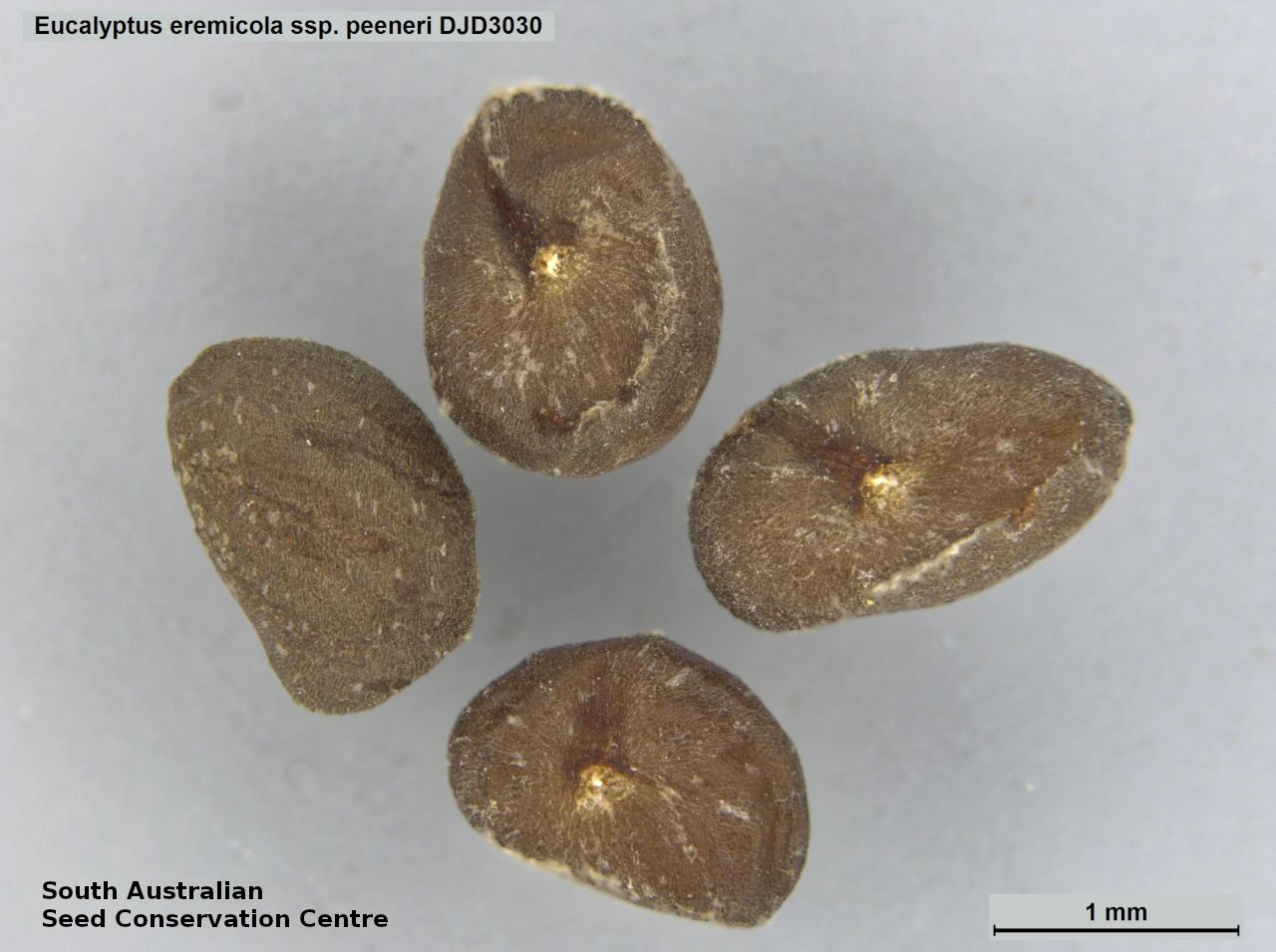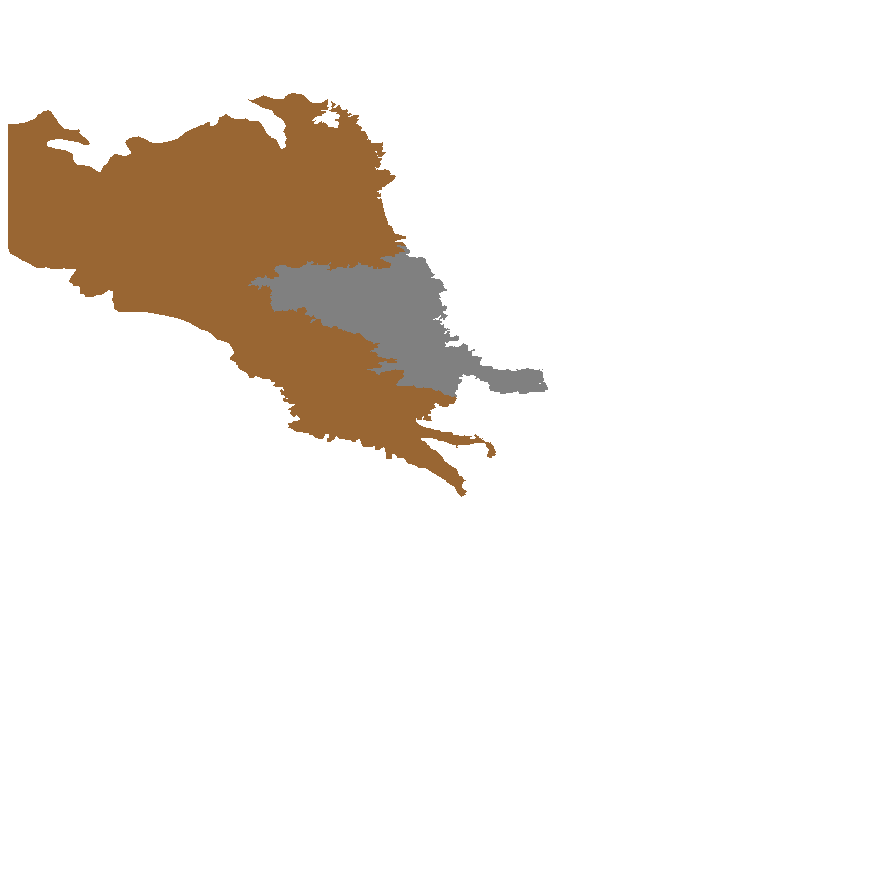


Prior names
Eucalyptus sp. PP
Eucalyptus sp. O
Eucalyptus peeneri
Eucalyptus sp. N, questionably
Eucalyptus sublucida
Eucalyptus oleosa var. peeneri
Common names
Peeneri Mallee
Etymology
Eucalyptus from the Greek 'eu' meaning well and 'calyptos' meaning covered; alluding to the cap or lid which covers the stamens in the bud. Eremicola from the Greek 'eremia' meaning desert and 'cola' meaning dwelling; referring to its distribution in the Great Victoria Desert. Peeneri is of Aboriginal origin.
Distribution and status
Found in the western part of South Australia, in the Great Victoria Desert, growing on deep red loams or sand overlying limestone in flats and swales between sand ridges. Also found in Western Australia. Native. Rare in South Australia. Uncommon in Western Australia.
Herbarium regions: North Western, Nullarbor, Gairdner-Torrens
AVH map: SA distribution map (external link)
Plant description
Multi-stemmed mallee to 9 m high with rough, stringy-fibrous, grey bark on lower stems and smooth, pinkish-grey over cream to white, often powdery bark above. Juvenile leaves elliptical first becoming linear, slightly blue-green. Adult leaves to 133 mm long and 21 mm wide, narrow-lanceolate, dull to slightly glossy, blue-green. Inflorescences in groups of 9-13 in the axils of the leaves. Buds to 8 mm long and 4 mm wide, cylinder-shaped, bud-cap long cone-shaped longer than the base. Flowers white appearing sporadically after rain. This subspecies differ from the other subspecies found in South Australia, E. eremicola ssp. eremicola which has highly glossy green adult leaves. Fruits are round fruit to 5.5 mm long and 7 mm wide, disc descending, valves 3 or 4, tips joined when immature, then enclosed below rim with a pointy tip. Seeds are brown elliptical to ovoid seed to 1.5 mm long and 1.2 mm wide. Seed embryo type is folded.
Seed collection and propagation
Collect seeds between January and December. Collect mature fruits that are dark and hard (difficult to break with a finger nail), with the valves un-open any time of year. Leave the fruits in a breathable container in a dry room for one to two weeks. This allows the valves on the fruit to open and release the seeds. Separate the seeds by placing all the materials into a bucket and shaking it to dislodge the seeds. Pass the material through a sieve to separate the unwanted material. The finer material will contain both seeds (soft) and frass (hard) usually distinguishable from each other but can be very similar in shape and colour. With finer sieves, the seeds can be separated from the frass but this is not essential for storage or propagation. Store the seeds with a desiccant such as dried silica beads or dry rice, in an air tight container in a cool and dry place. From one collection, the seed viability was high, at 100%. Seeds are non-dormant, viable seed should germinate readily.
| Location | No. of seeds (weight grams) | Number of plants | Date collected | Collection number Collection location | Date stored | % Viability | Storage temperature |
|---|---|---|---|---|---|---|---|
| BGA MSB | 2,600 (1.58 g) 2,600 (1.58 g) | 50+ | 22-Nov-2005 | BS94-5080 North Western | 8-Aug-2006 | 100% | -18°C |
| BGA | 45,000 (13.88 g) | 10 | 21-Sep-2014 | DJD3030 North Western | 1-Jan-2016 | 85% | -18°C |
Number of plants: This is the number of plants from which the seeds were collected.
Collection location: The Herbarium of South Australia's region name.
% Viability: Percentage of filled healthy seeds determined by a cut test or x-ray.